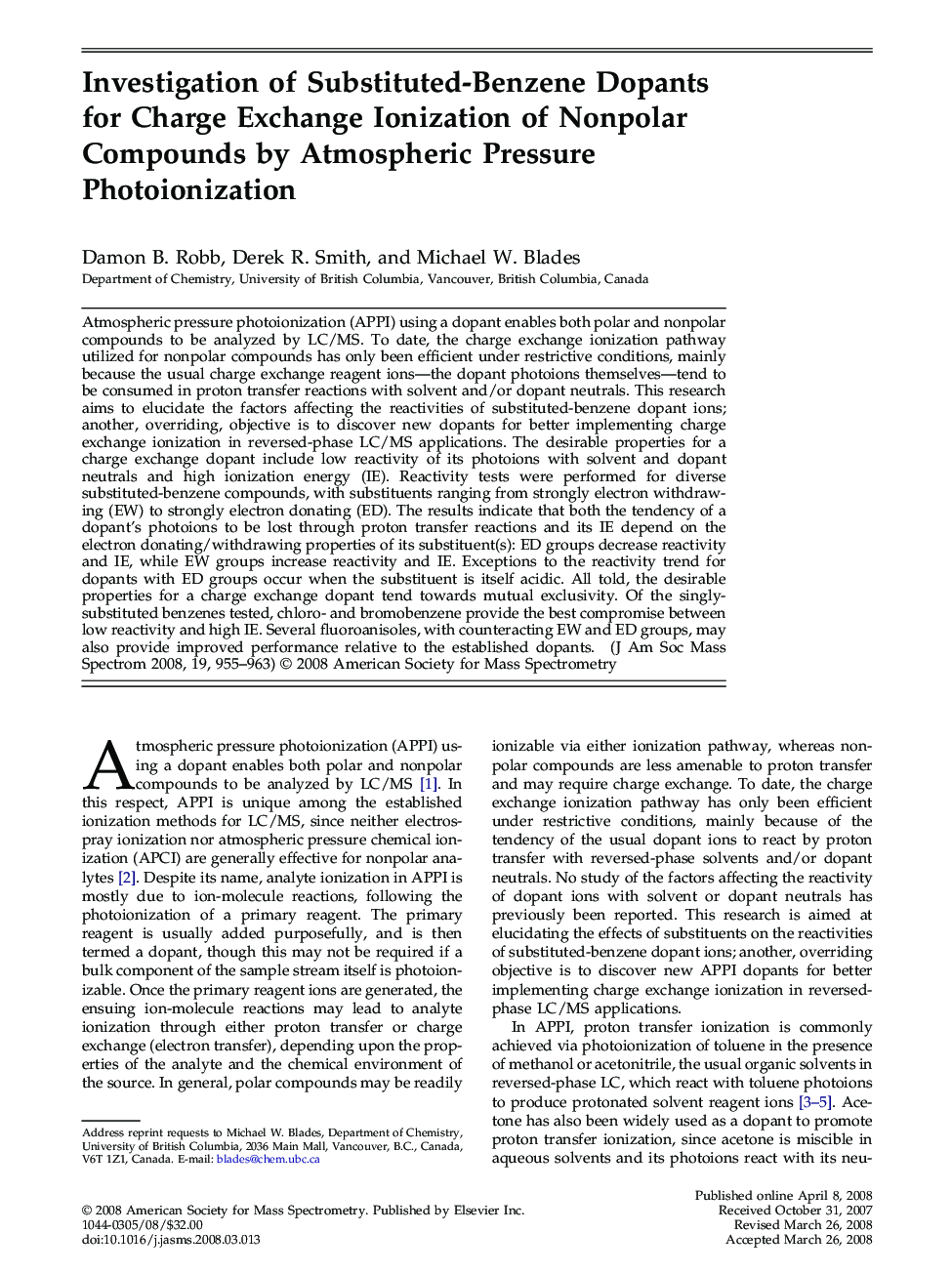| کد مقاله | کد نشریه | سال انتشار | مقاله انگلیسی | نسخه تمام متن |
|---|---|---|---|---|
| 1195315 | 964317 | 2008 | 9 صفحه PDF | دانلود رایگان |

Atmospheric pressure photoionization (APPI) using a dopant enables both polar and nonpolar compounds to be analyzed by LC/MS. To date, the charge exchange ionization pathway utilized for nonpolar compounds has only been efficient under restrictive conditions, mainly because the usual charge exchange reagent ions—the dopant photoions themselves—tend to be consumed in proton transfer reactions with solvent and/or dopant neutrals. This research aims to elucidate the factors affecting the reactivities of substituted-benzene dopant ions; another, overriding, objective is to discover new dopants for better implementing charge exchange ionization in reversed-phase LC/MS applications. The desirable properties for a charge exchange dopant include low reactivity of its photoions with solvent and dopant neutrals and high ionization energy (IE). Reactivity tests were performed for diverse substituted-benzene compounds, with substituents ranging from strongly electron withdrawing (EW) to strongly electron donating (ED). The results indicate that both the tendency of a dopant's photoions to be lost through proton transfer reactions and its IE depend on the electron donating/withdrawing properties of its substituent(s): ED groups decrease reactivity and IE, while EW groups increase reactivity and IE. Exceptions to the reactivity trend for dopants with ED groups occur when the substituent is itself acidic. All told, the desirable properties for a charge exchange dopant tend towards mutual exclusivity. Of the singly-substituted benzenes tested, chloro- and bromobenzene provide the best compromise between low reactivity and high IE. Several fluoroanisoles, with counteracting EW and ED groups, may also provide improved performance relative to the established dopants.
Journal: Journal of the American Society for Mass Spectrometry - Volume 19, Issue 7, July 2008, Pages 955–963